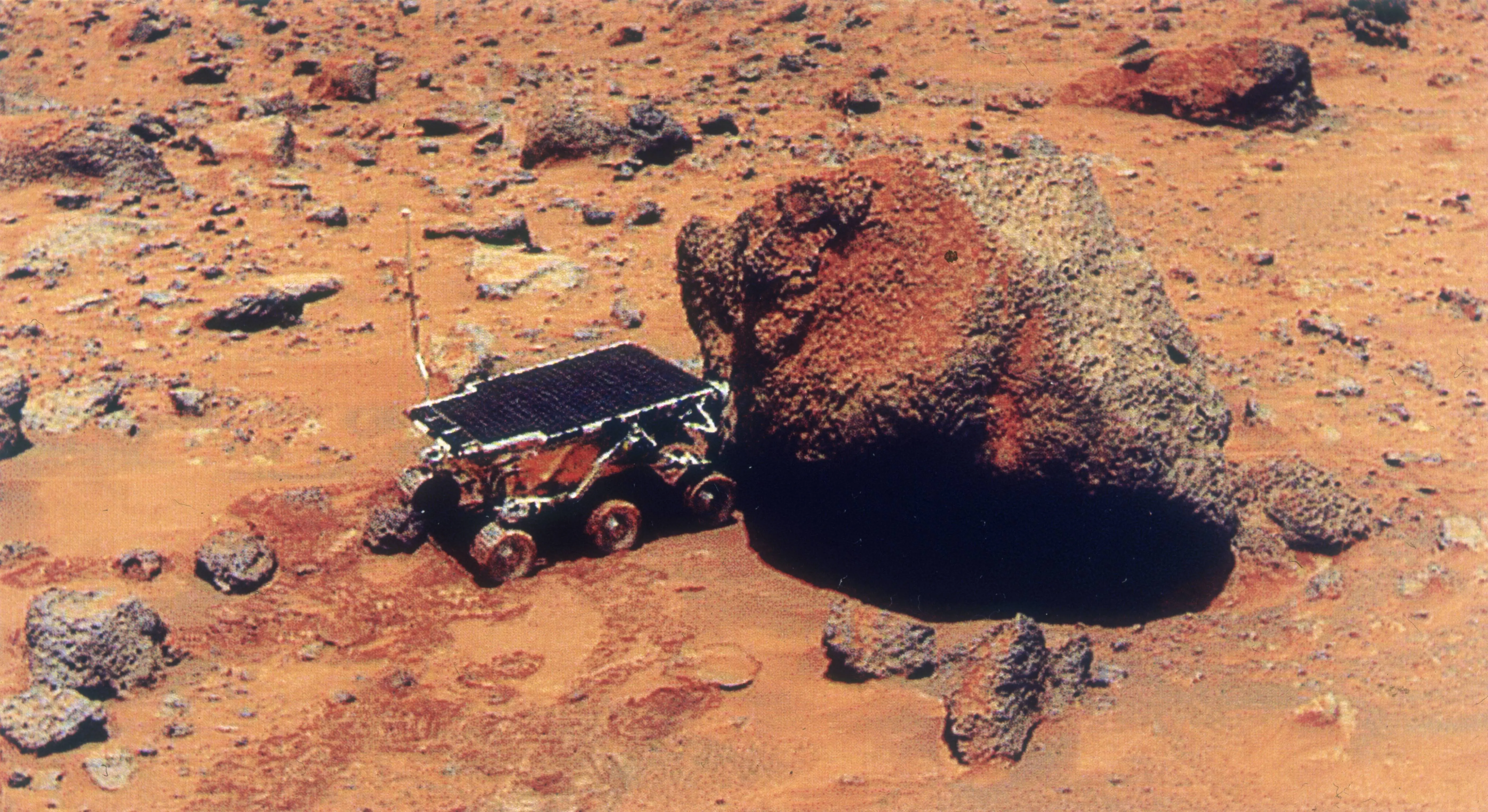Researchers say Mars’ dry ice may “burrow” across the planet, similar to scenes from the movie Dune
-
 The Sojourner Rover uses its Alpha Proton X-Ray Spectrometer (APXS) to analyse the Yogi Rock on the surface of Mars, during the Mars Pathfinder exploratory mission, July 1997. The rock was thought to be composed of basalt. (Photo by Space Frontiers/Hulton Archive/Getty Images)
The Sojourner Rover uses its Alpha Proton X-Ray Spectrometer (APXS) to analyse the Yogi Rock on the surface of Mars, during the Mars Pathfinder exploratory mission, July 1997. The rock was thought to be composed of basalt. (Photo by Space Frontiers/Hulton Archive/Getty Images)Scientists have found something unusual happening on Mars. They believe dry ice — which is frozen carbon dioxide — might move and burrow across the planet’s surface, a bit like the giant sandworms from the movie Dune.
The new research shows that when the frozen carbon dioxide turns into gas, it can slide or even hop, leaving trails and marks behind on the red soil. This simple but powerful process may explain many of the strange shapes and patterns scientists have seen on Mars.
How dry ice moves on Mars
Scientists studied pictures and data taken by spacecraft orbiting Mars. During the cold Martian winter, dry ice forms on the ground. When spring arrives, sunlight warms the surface, and instead of melting, the dry ice changes directly into gas — a process called sublimation.
As the gas builds up under the ice, it pushes the dry ice pieces upward and makes them slide across the dusty surface. These moving chunks can leave behind paths that look like small tunnels or burrows. Researchers say this could be why parts of Mars have strange grooves and spider-like patterns.
Why this discovery matters
Scientists think this finding explains many mysterious markings seen on Mars over the years. Some areas show dark lines or web-like shapes — known as spiders — formed when gas escapes from below the surface. Other areas show smooth trails that suggest sliding blocks of ice.
This process helps shape the planet’s surface and shows that Mars is not as quiet as people once thought. Even though there is no liquid water, Mars still changes slowly with time. The dry ice, along with the thin atmosphere and changing seasons, continues to carve and reshape the land.
What scientists are learning
Researchers say studying this movement helps them understand how Mars’ weather and temperature cycles work. It also gives clues about what happens on other cold planets and moons that have frozen gases.
Knowing how dry ice behaves could help future Mars missions too. Rovers or landers need to understand how the ground shifts and changes over time so they can move safely and collect better data.
A reminder of how alive Mars still is
While the sandworm comparison sounds like science fiction, scientists say the real process is just as fascinating. Mars may look still from far away, but its surface is alive with slow, natural movements caused by sunlight, gas, and frozen carbon dioxide.
This new study shows that even without water or life, Mars continues to surprise us. The movement of dry ice adds another layer to the story of this mysterious planet, reminding us that nature is always at work — even in the coldest corners of our solar system.
TOPICS: International Space Station, NASA
- NASA names international four-member crew for upcoming SpaceX space station mission
- Inside the International Space Station after a quarter century of human habitation
- Vast invites scientists to pitch microgravity experiments for its upcoming Haven-1 commercial space station
- NASA's Expedition 74 carries out expanded biomedical and technology studies on the ISS